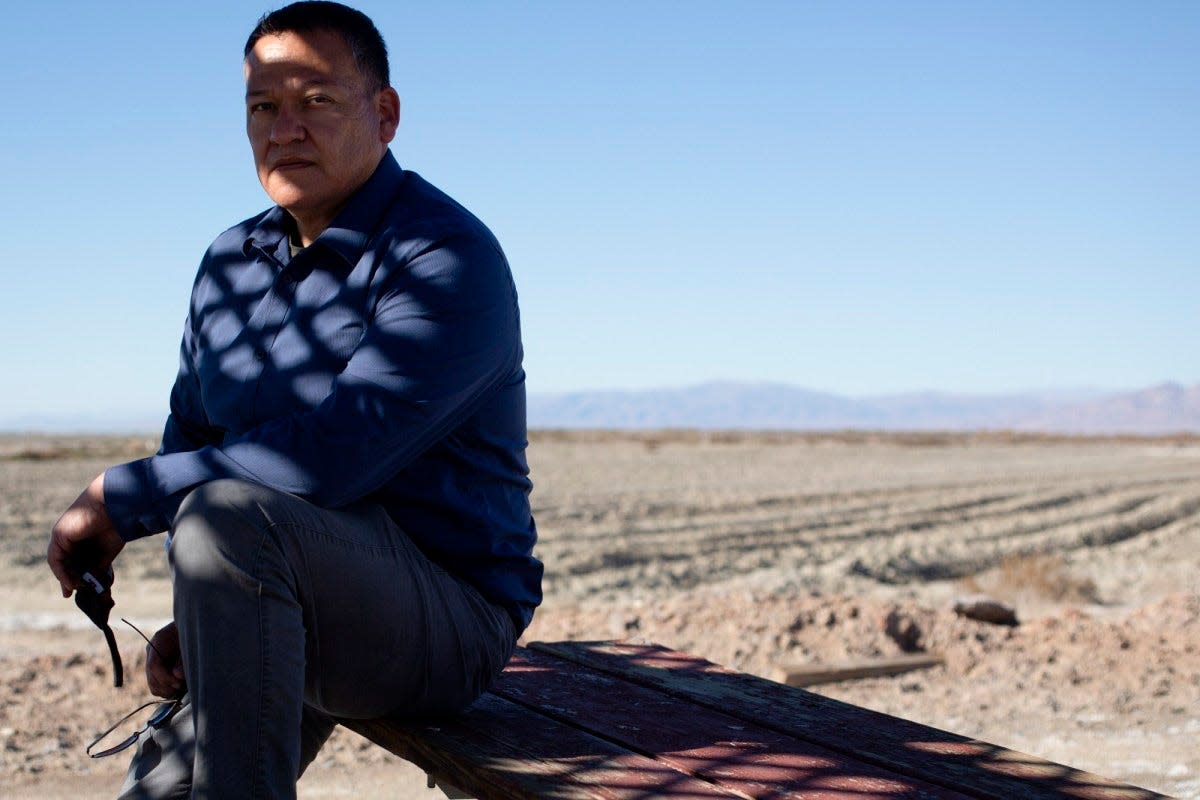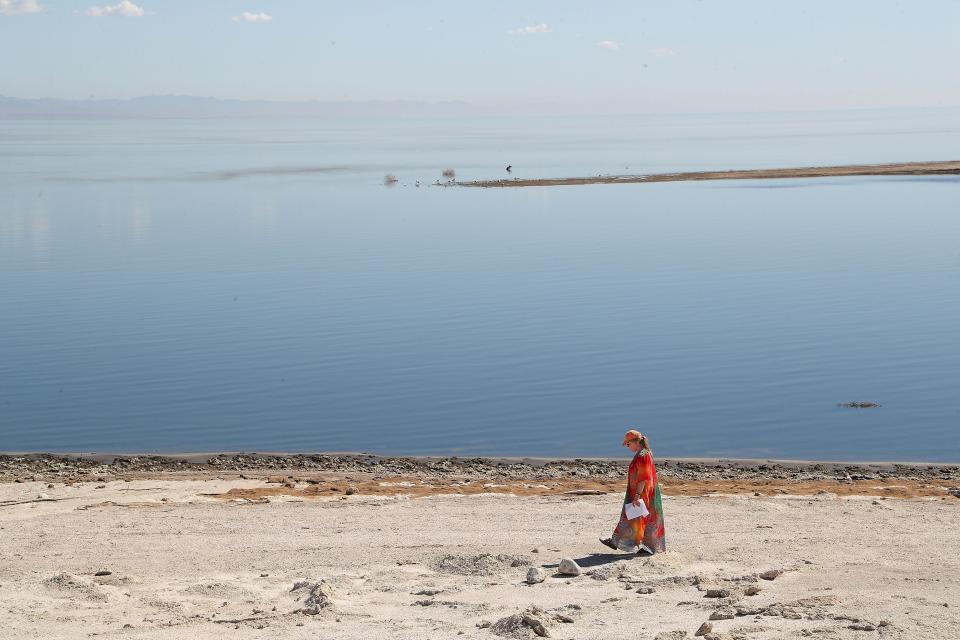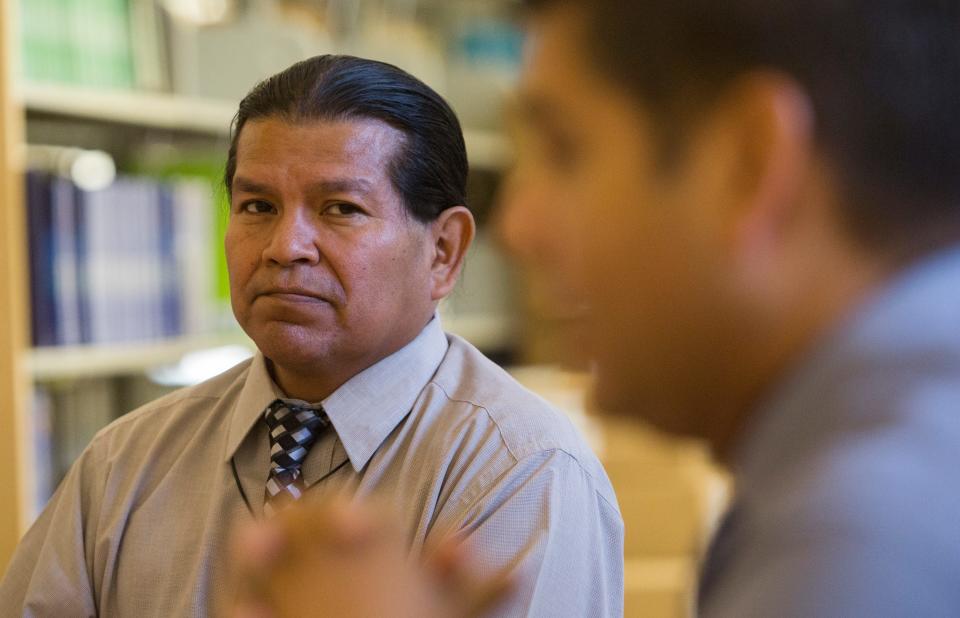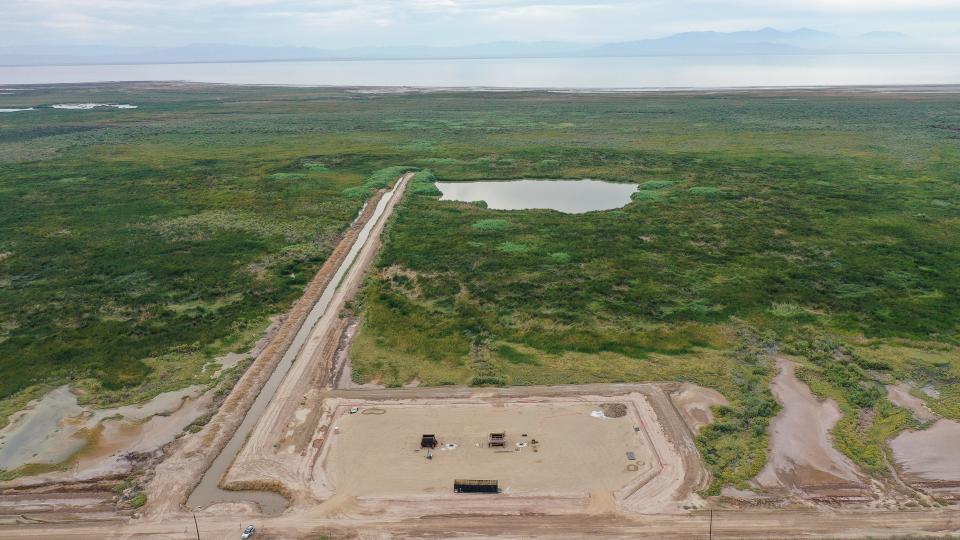Lithium Valley: Hundreds of commenters on draft state report voice support — and concerns

At the tail end of another marathon Lithium Valley Commission meeting last Monday, Jared Naimark, an organizer for an environmental nonprofit called Earthworks, asked a question: "When will commissioners discuss the public comments that were received on the draft report?"
But the nearly four-hour meeting was adjourned with both that question and earlier comments Naimark made left unanswered. At the heart of his concerns was the fact that a comprehensive draft report the commission is preparing for state legislators had already been markedly changed three days after public comment closed, with no apparent consideration of that input.
"I would just like to urge some clarity going forward as to how the public comments received will be reviewed and discussed by the commissioners," said Naimark.
As the "blue ribbon" commission pushes toward a self-imposed Dec. 1 deadline to submit its mandated report to the California Legislature with recommendations on the nascent but potential multi-billion dollar industry at the south end of the Salton Sea, it has received hundreds of comments, spanning a wide range of perspectives.
Two-thirds of the comments appear to be part of an organized campaign in support of lithium recovery in Imperial County, and ironically say no further public comment or engagement is needed. But scores of organizations and other individuals and government agencies also have weighed in, requesting — or opposing — more health studies, deeper tribal consultation and protection of sacred sites, expansion or consolidation of environmental reviews and use of Project Labor Agreements, among other issues.
From the United Auto Workers' 150,000-member Western States branch and two other labor groups, to U.S. EPA Region 9, Los Angeles area battery recyclers, the Sierra Club, Audubon California and others, extensive comments from major outside groups were submitted by the close of public comment on Friday, Oct. 28. Other commenters included area residents, tribes, would-be developers and community organizations.
The intense interest shows the high stakes at play.
Lithium is a critical component in electric vehicles, battery storage, cell phones and other technology because it is lightweight and can hold a charge for lengthy periods. Large quantities sit two miles below ground in a massive geothermal brine reserve in impoverished northern Imperial County.
While Lithium Valley Commission reached agreement Monday on many of its 23 consolidated recommendations, down from 44, knotty issues remain, including whether multiple health assessments should be done, whether a state agency should track permitting, and perhaps thorniest of all, which geography is encompassed by the term "Lithium Valley."
Because their discussion ran over its allotted time, commission members did not review a summary of the public comments prepared by California Energy Commission staff who are crafting the commission's report. Nor did they discuss the public input.
The 14-member, unpaid lithium commission is an advisory body of the California Energy Commission. It was created in 2021 via legislation authored by Assemblymember Eduardo Garcia, D-Coachella. It must “review, investigate, and analyze opportunities and benefits for lithium recovery and use in the state,” and produce a final report for the legislature by Oct. 1, though it missed the deadline.
CEC staff said in their summary that key themes and topics raised in the public comments included:
Concern about the unknown and excitement about potential opportunity
Potential cumulative public health and environmental impacts need to be identified, communicated and mitigated.
Potential economic and environmental impacts will affect the broader Salton Sea region, beyond the fenceline communities; fenceline communities should be prioritized but broader region must be included
Make information available in accessible formats
Economic benefits and environmental and public health impacts of lithium recovery projects
The need to define "Lithium Valley," with a physical boundary; clarify economic benefits and who will receive them.

The comments are technically out-of-date because while the public comment period closed on Friday, Oct. 28, a new, "red-lined" report based on commissioners' edits and recommendations has already been prepared and was discussed extensively on Monday, Oct. 31.
Courtney Coyle, attorney for Carmen Lucas of the Kwaaymii, Laguna Band of Indians, criticized that focus at the end of Monday's meeting saying "energy seems to have been put into the consolidated recommendations which offer little to meet Tribal concerns ... We ask that the comments from our submitted Oct. 24 letter be reconsidered during the drafting of the final report and recommendations."
She said those concerns include possible industrial expansion away from the Salton Sea and into green fields, and lack of cultural surveys.
The commission, chaired by Silvia Paz of Alianza Coachella Valley, has also held a series of community and tribal meetings in three languages, which some community members praised. Part of the challenge is that the state law creating the panel allocated no funds for full-time staff, meaning energy commission staffers are tackling crafting a report that best represents the diverse panel's findings and recommendations atop other work responsibilities.
But all the comments will be reviewed and considered, energy commission spokeswoman Lindsay Buckley said. "Yes, public comments — oral and written — will be considered for inclusion in the Final Report," she said in an email to The Desert Sun. "The Commissioners were asked to consider the comments —as well as their discussion and public comments at the Monday meeting — and provide staff with proposed modifications."
Buckley said staff writing the final draft will consider public comments and the commissioners' input, and will "consider and balance the various perspectives expressed."
Angry pushback from Imperial County

Chairwoman Paz said that there should be plenty more opportunities for public comment.
"While every Lithium Commission meeting has opportunities for public comment," she wrote in an email, "the development of a lithium-based industry in Imperial County is only in its nascent stage and opportunities for public comment should be prioritized even after the Lithium Commission submits their report to the Legislature."
Commission Vice Chairman Ryan Kelley, an Imperial County supervisor who represents the "Northend" where the lithium reserve is located, said that he and the other panelists were reviewing all the latest public comments, as they have done since the commission first met in 2021.
But he expressed anger about the extensive input received from environmental groups outside the area, especially those pushing to have California's tough Environmental Quality Act augmented with more health studies, and about calls by some to include all of Riverside County or the Coachella Valley as part of "Lithium Valley."
"The Sierra Club and few others, they can all go back to their nice Mercedes and BMW rides on El Paseo in Palm Desert or wherever else they are able to dine and wine in extravagance," he said in an interview. "When you come in and say 'we need to have CEQA as a base and build on that, and we need to stall all development for more studies,' I mean, who the hell are you coming out of Sacramento or L.A. or San Mateo telling us we can't do something because you don't like it?"
By far the largest number of letters came from supporters of Imperial County's and would-be developers' plans. Approximately 244 identical or nearly identical emailed comments were received supporting swift lithium recovery in Imperial County, and stating no further community outreach should be required. Of those, state staff said, the residency of the commenters was only given for 39%, though a third were from Imperial County residents, where three companies are planning major developments if their technology and funding pan out.
"So far, I have been encouraged by the outreach, materials, resources and calls I have received from the local lithium industry and look forward to continued engagement. I too want to see engagement when it comes to the continued development of this unique industry," wrote Laura Rivera of Calexico. Those same comments were repeated verbatim by James Jessee of El Centro, Jason Gilles of Thermal and hundreds of others.
"However," they each concluded, "community outreach should not be mandated as a prerequisite to greenlighting a project with many tremendous benefits."
It was not immediately possible to determine who organized the letter-writing campaign or whether it was funded in any way. Kelley said the county had not done it, but he thought an area developer might have.
But a coalition of 10 area community groups and environmental organizations and a separate missive from the Center for Biological Diversity said in their comments that while lithium extraction holds great promise for both reducing greenhouse gas emissions from gas-powered vehicles, and for creating jobs in the region, continued and expanded community and tribal engagement is vital.
Several also said separate health needs assessments should be done for eastern Coachella Valley communities that already are affected by area pollution, and who might experience new impacts from lithium extraction. Many also supported language in the original draft saying CEQA should be considered a floor, not a ceiling.
Imperial County's Board of Supervisors filed their own, unanimously passed, lengthy comment letter saying just the opposite, that adding to the already onerous CEQA process would delay projects for a decade. Industry representatives on the commission and company representatives also oppose adding additional potentially lengthy, costly layers of scrutiny.
The CEQA-specific language has been removed, but commissioners are still debating a revised recommendation for the state to "require and fund a study on whether increased geothermal development and (direct lithium extraction) — and anticipated related development — would result in cumulative environmental impacts beyond those addressed in project-level environmental review and, if so, include recommendations to avoid, reduce, or minimize those impacts."
Tribes oppose harm to sacred sites

In recent months, tribes in the region have also increasingly voiced strong concerns about the construction of a major industrial zone on or near sacred and cultural sites near the Salton Sea.
"The preservation of (Torres Martinez Desert Cahuilla Indians) and Quechan cultural sacred sites is of the utmost importance to our members," wrote Torres Martinez tribal council chairman Thomas Tortez Jr.
The tribe, whose reservation encompasses 24,000 acres of lands near or under the Salton Sea, also wants to be fully consulted with, and to understand and reap the benefits of responsibly sourced lithium and related development. But lack of resources to fully understand the potential impacts of the manufacturing zone is a major concern, Tortez wrote, repeating concerns first expressed in January.
"We also feel the need to restate that our Tribe and other low-income communities within Lithium Valley are at a significant disadvantage without technical resources to help us specifically understand the potential viability, risks, impacts, and costs and benefits of lithium related project development in the region," wrote Tortez. "We would ask the Commission, again, to help provide qualified technical and engineering resources to assist us in evaluating the potential lithium resource from our submerged Salton Sea lands and opportunities to partner on geothermal energy development, lithium refinement, or support services."
Tortez thanked General Motors for meeting with the tribe, and two would-be lithium producers, Controlled Thermal Resources and Berkshire Hathaway, for reaching out to plan meetings. Imperial County officials say they also have met with two tribes and have repeatedly tried to schedule a meeting with a third.
Lithium Valley Commissioner Manfred Scott, acting chair of the cultural committee for the Quechan tribe, at the Fort Yuma Reservation, told The Desert Sun that members of his tribe share the concerns. He said he is personally opposed to the proposed development so far, because he thinks of the region as the site of ancient Lake Cahuilla, not "Lithium Valley," but that his tribal council would vote on final input.
Next steps

The commissioners had until Friday to submit comments for the final draft of their report, and are scheduled to meet again on Nov. 17 to discuss and vote on the final draft, at a site to be determined in Imperial County. Buckley, the energy commission spokeswoman, said the final draft "will be made available to the public in advance of the Nov. 17 commission meeting. The public will also have an opportunity to comment on the draft final report at the Nov. 17 commission meeting."
There are some limited documents on the Lithium Valley Commission's main website, including the initial draft report. To review public comments, the revised draft report, the draft condensed recommendations and other documents, go to the Lithium Valley Commission docket and scroll down, then click on relevant items.
Janet Wilson is senior environment reporter for The Desert Sun, and co-authors USAToday's Climate Point newsletter. She can be reached at jwilson@gannett.com or @janetwilson66 on Twitter
This article originally appeared on Palm Springs Desert Sun: Lithium Valley: Hundreds comment on state panel's draft report

